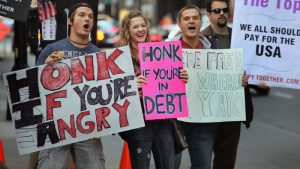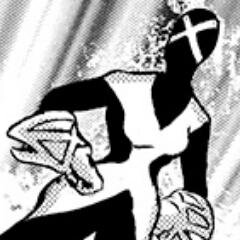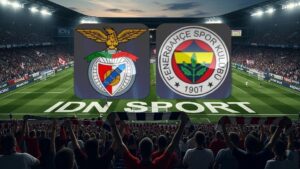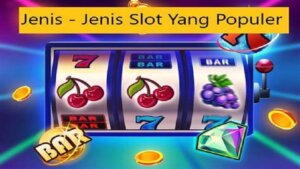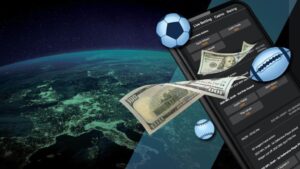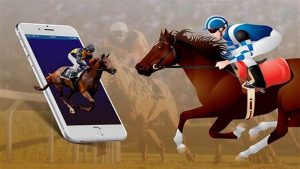
When we left off last time, Sun Yat-sen had just accepted military aid from the Soviet Union to form the Whampoa Military Academy, which had students not only from the Nationalist Party but also from the Communists. The military academy had a goal, of creating a cohesive officer corps to lead the Republic of China armed forces. The then-existing officer corps was composed of men from a variety of backgrounds. Some had come up the hard way in warlord armies, others had gone to provincial military academies that started during the end of the Qing dynasty. Still others had completed military training in Japan. Whampoa would play an important role in the Chinese Civil War, as men from Whampoa led military units on both sides. Without the training from Whampoa it is doubtful if the Communists could have raised the army that they did.
Any officer corps has to have a consistent ethos, whether in 1925 or the present day. Without that, the group functions less efficiently. This is true in the present day as well. Although the US military is often seen as “non-ideological” by mainstream commenters, this is far from the truth. Part of this has to do with the Cold War. The US establishment would say that the Soviet Union was “ideological” while the US was simply “non-ideological” and democratic. In reality, however, the US military made efforts to impress upon its personnel that they were obedient to the Republic, via an oath to the Constitution. This separation between civil and military power is an ideology and it is one that has remained remarkably consistent since the early days of the United States.
At Whampoa, the guiding political ideology came to be ostensibly Sun Yat-sen’s theories, namely, the Three Principles of the People. Sun defined these as democracy, nationalism and people’s livelihood. These were the official ideology of the Nationalist Party, known as the Kuomintang (KMT for short). It is a point of historical contention, but many people believe that Sun was actually talking about socialism when he referred to “people’s livelihood.” What is known, however, is that Sun was a follower of Henry George. When I first read that years ago, I failed to understand the significance, as the author wrote George off as irrelevant. That was untrue.
George was an economist who had observed that rising land rents tended to be 1) claimed by a small group of people 2) that land was a natural monopoly and that if unchecked, it would strangle an economy and impoverish the majority. George had lived in Gold-Rush-era San Francisco and witnessed how the initial widely shared prosperity narrowed over time as rent became more and more expensive. His theory was that the improvements to the land (buildings, etc) and coincidental proximity to desirable locations (San Francisco as a port of trade/center of culture) raised the value of land.
George proposed a land tax to reduce the power of the landlords and spread the value of the land throughout society. By reducing taxing away high rental value, therefore, society could enable investment into productive industries and enterprises. Incidentally, the problem of rent-extraction via high land values is still relevant today– anyone who lives in the Bay Area can tell you all about high rents, and high mortgage payments that take up more and more of our income.
In retrospect, Sun’s affinity for George is blindingly obvious, as landlords had long oppressed Chinese tenant farmers. There was a strong argument that landlord rent-extraction had strangled the Chinese economy and prevented the rise of industry. Sun had abortive plans to enact land reform, i.e. breaking up the large landlord estates. He was not a Communist, but nonetheless solicited the assistance of the Soviet Union. The Soviets agreed, because in their standard Marxist-Leninist view, China was not ready for Communism since it was an agrarian society. The standard Marxist-Leninist view was that the next step after agrarian society was industrial capitalism.
Therefore, the Soviet Union directed the nascent Chinese Communist Party (CCP) to cooperate with the KMT, and the KMT under Sun allowed this. The CCP also secretly recruited some members of the KMT. The CCP had its origin in what became known as the May 4th Movement, an intellectual trend that arose out of student protests on 4 May 1919. The students gathered to protest the fact that the Republic of China government had failed to reclaim a German colony in Shandong province. China had entered World War I on the side of the Allies, sending thousands of laborers. Among other things, the Allies had promised that they would give China back a German colony at the conclusion of the war. In the course of negotiations, Japan ended up the owner instead.
This was totally unacceptable to many people, and naturally they rose up in protest. It was especially bitter because the United States under President Woodrow Wilson had publicly claimed that they supported the right to national self determination. Yet, at Versailles, this all came to nothing. Incidentally, there was another Asian delegation that petitioned Wilson at Versailles for national self determination and the end of colonial rule, led by a man who at the time called himself Ngyuen Ai Quoc. He would later study and give lectures at Whampoa.
The West would come to know him as Ho Chi Minh, leader of the Vietnamese Communists and opponent of the United States during the Vietnam War.
Many of the May 4th Movement intellectuals became deeply disillusioned with the claims of Western liberal democracies, and those in China who had advocated Western models. At the same time, they opposed the classical Chinese society embodied in the age-hierarchy of Confucianism. Some were writers and poets, who embraced the idea that the written language should mirror the spoken. And some began to think that Communism was a more suitable tool for achieving national self determination.
By 1919, there was a small group at Peking University reading Marx, led by Li Dazhao a librarian, and Chen Duxiu, a dean. One of the group members was a young man who worked in the library as an assistant. His name was Mao Zedong, later the chairman of the Communist party and eventual victor in 1949. In reviewing the literature to prepare this blog entry, I discovered that recent scholarship indicates that Li had strong anarchist leanings initially, and anarchists were major influences in the early CCP. Nonetheless, by 1922, Chen and Li officially founded the Communist Party in Shanghai, with assistance from the Soviet Union.
By 1925 there were more than a few Chinese who had joined Communist cells and travelled extensively in Europe, especially in France. Crucially, one of those men joined the Whampoa faculty in the political department. His name was Zhou Enlai and eventually he would rise to be Mao’s right hand man. While at Whampoa, Zhou led political study classes (likely in Marxism) and recruited followers, both overtly and covertly. Zhou was born to a scholar-official family and he was famous for his courtly manner and intellectualism. Later in life he served as Mao’s number two man, and exerted considerable skill as a diplomat. What is less known is that there is considerable anecdotal evidence that he was a classically trained martial artist, and that he ran covert assassination squads for the Communist Party that took vengeance on entire families for the deeds of a family member. Zhou took the time at Whampoa to recruit spies within KMT circles.
Zhou wasn’t the only one recruiting followers at Whampoa. While Zhou was in the political department evangelizing Marxism, the commandant of Whampoa had his own ideas. The commandant was none other than Chiang Kai-shek, who would later succeed Sun as the leader of the KMT upon Sun’s death. Chiang had enjoyed a classical education as a young boy, then fallen into poverty. He later studied at a Japanese military academy. Chiang had helped save Sun’s life when an angry warlord sent soldiers to kill him. Chiang also had extensive ties to one of the largest of the Shanghai drug gangs, the Green Gang, and had a police record in Shanghai for murder, extortion and robbery.
In short, both Zhou and Chiang were far from angels– they were men who were fluent in the language of violence. After the death of Sun Yat-sen in 1925, Chiang managed to come out on top as the maximum leader. He increasingly viewed the Communists and the Left in general as a threat to his power. Chiang was no doubt aware that the Communists continued to recruit cells within the military, and civilian cultural organizations. Zhou and the other Communist leaders were no doubt aware that Chiang had made his bones with a gang of drug dealers, and would not hesitate to pull triggers– with his own hand, if necessary. Despite an official policy of KMT-CCP cooperation, everyone knew that something very ugly was on the horizon. Part of the purpose of this series of blog posts is to show very clearly what happens when peaceful change fails and political struggle becomes armed struggle. Once a culture dissolves the monopoly of violence, then armed political factions and criminal enterprises become the only people who can survive. All the good, kind, decent things that you can do become less possible, and less likely.
Up next time– Chiang Kai-shek shows his hand, and the streets of Shanghai run with the blood of women and children.

